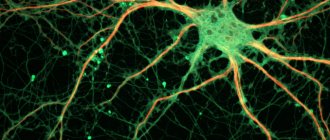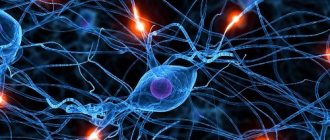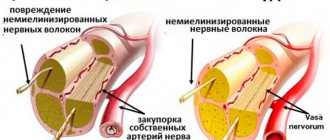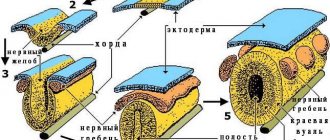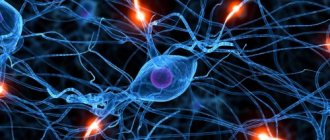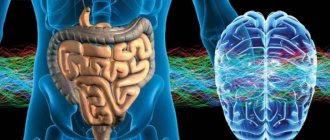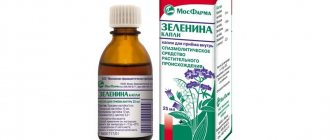- original teddy bear by Svetlana Shelkovnikova 2009- (84)
- designer Teddy bears by Svetlana Shelkovnikova 2011- (49)
- Psychological Educational program (39)
- designer Teddy bears by Svetlana Shelkovnikova 2014 (15)
- bright people of the earth (11)
- designer Teddy bears by Svetlana Shelkovnikova 2020 (4)
- designer Teddy bears by Svetlana Shelkovnikova (146)
- My handicraft fun (28)
- Exhibitions, Fairs, awards (80)
- I just work as a wizard (34)
- Personal (357)
- for yourself (61)
- such a mood (128)
- my house, my garden, my family (86)
- my Travels, Walks (118)
- Homeland (43)
- It's nice there (27)
- Festivals (12)
- my photographic works (35)
- Art therapy (193)
- Lifestyle (87)
- To help the master (321)
- knitted toys, patterns, MK. (21)
- everything for toys (3)
- handicrafts (1)
- Knitting (20)
- decoupage (17)
- sewn toys (38)
- packaging (18)
- social (13)
- video (78)
- Advice, help (27)
- thank you (57)
A weak nervous system is not able to tolerate super-strong stimuli.
It either turns off immediately (the inhibitory process prevails over excitation), or it is “carried away” without any brakes, with unpredictable consequences (inhibition does not have time to cope with excitation). A weak nervous system, however, has increased sensitivity, or high sensitivity, the ability to distinguish ultra-weak signals. A weak nervous system is characterized by the ability to finely differentiate between similar stimuli. This is its advantage over the strong one. The negative relationship between the strength of the nervous system and the sensitivity of the analyzer equalizes the capabilities of both nervous systems. For example, teachers - owners of a weaker system - are often nervous in the classroom, behave less balanced, but, in a number of situations, better reflect the dynamics of interpersonal relationships in the classroom. Teachers - carriers of a strong nervous system - have better restraint and unimpressionability. Children painted a chair with chalk - no problem. The chair was pushed under the table. They work calmly and without hysterics. However, they feel the student worse in class.
The recent increase in the concentration of representatives of the weak nervous system is by no means a random phenomenon. In persons with a weak nervous system, conditioned reflexes are formed more quickly. They learn more easily and grasp faster, which is explained by the high dynamism of the excitatory process. A weak nervous system assimilates educational material that is logically designed and connected by a general idea better. A strong nervous system has an advantage in remembering large amounts of information that is of little use for semantic processing. In a weak nervous system, the speed of searching through options for solving a problem per unit of time is higher. She adapts faster, acclimatizes, adjusts, and settles down. Persons with a weak nervous system are also more likely to continue their education.
If we consider in more detail the behavior of the weak and strong nervous systems in the educational process, we can discover a number of interesting patterns. A weak nervous system is included in the educational process immediately. With prolonged hard work, she begins to make mistakes and drops out of the process: the student gets tired. For example, in younger teenagers this is expressed in physical activity, mischief in class, if they do not change the form of assignments after 5-8 minutes. High endurance and performance of a strong nervous system are overshadowed by another circumstance. A strong nervous system is not distracted during the lesson and does not lose its efficiency, only it does not turn on so quickly, the process of getting used to it takes longer.
For a student with a strong nervous system, tasks should be presented from simple to complex. For a weak nervous system, tasks should be set in the reverse order (from complex to simple), i.e., do not read morals at the beginning of the lesson, but “take the bull by the horns.”
What it is?
Properties of the nervous system is a term proposed by the Russian scientist I. P. Pavlov, which characterizes the innate characteristics of the response and functioning of the nervous system. These traits determine how it reacts to environmental conditions and human behavior.
You may be interested in: What is the aorta? Aortic seal
The totality of all properties of the nervous system is called the phenotype. It is on the basis of this concept that a psychologist works with a person. Although the phenotype is genetically determined, it can change depending on environmental conditions.
Basic properties of the nervous system
I. P. Pavlov in his classification initially characterized three main properties:
- force;
- equilibrium;
- mobility.
Channel PROGRAMMER'S DIARY
The life of a programmer and interesting reviews of everything. Subscribe so you don't miss new videos.
With further study of the nervous system, three more new properties were added to these properties:
- dynamism - the ability of the brain to quickly respond to changing environmental conditions, namely to the processes of excitation and inhibition of its structures; its main characteristic is the speed of formation of conditioned reflexes in an individual;
- lability - the speed with which a new process appears and ceases;
- activity - refers to how easily the processes of inhibition and excitation are activated in the brain.
Max Luscher color test
Purpose of the test: designed to study emotional states, leading trends and needs of the individual. The subject is asked to rank the colors in order of preference from the most pleasant to the most unpleasant.
Characteristics of flowers
| Color | Condition (need) | Which children prefer this color? |
| Blue | Calmness, contentment, sensitivity | Sensitive, impressionable, calm, balanced, they usually have a need for deep personal, not superficial communication. |
| Green | Confidence, perseverance, determination, will, vanity. | Children with a high level of aspirations feel the need for praise and approval, often want to be better than others and strive for achievements, high grades, are concerned about their own position in the team, and show sensitivity in relationships with teachers. |
| Red | Activity, energy, willpower, offensive tendencies, intense emotionality. | Children are active, energetic, they are usually active and optimistic, cheerful, but often not restrained. |
| Yellow | Looseness, relaxation, activity, variability, readiness for contacts, hope for the future. | Children are dreamy, full of hopes for the best, in a good mood and feeling good. They prefer a wait-and-see attitude to active action. |
| Violet | Instability, emotional immaturity, unrealistic desires, suggestibility, intuition. | In children, infantile attitudes dominate. such a child may behave like a younger child. The sense of responsibility is not sufficiently developed and they have a good sense of the mood of loved ones. |
| Brown | Symbolizes the sensory basis of sensations, physical discomfort, painful condition, escape from problems. | Anxious children experiencing emotional and physical discomfort, bad mood. |
| Black | Rejection, protest, negativism, refusal, denial (sometimes criticality). | Children who choose this color express a negative attitude towards the world around them or themselves; sharp rejection of something or protest against something |
| Grey | Withdrawal, secrecy, caution, inhibition, boredom, disengagement, indifference, fatigue and stress. | Inert, passive, indifferent children, who are characterized by indifference to kindergarten, school, and passive rejection of this situation. |
The power of nervous processes
One of the main properties of the nervous system, which determines the further development of character and temperament, is the strength of nervous processes. This property shows how much the nervous system can resist the action of stimuli from the outside.
The main characteristic of the strength of nervous processes is how long the nervous system can last without extreme inhibition when exposed to an external stimulus for a long time. This should be a normal reaction in relation to the pathogen.
If we are talking about a process that inhibits the nervous system, then the main characteristic of strength will be the ability to withstand prolonged exposure to this stimulus.
In addition, physiologists argue that strength is characterized not by a person’s productive activity, but by the ways in which he can achieve his greatest activity.
Based on this property, such human character traits are formed as:
- endurance;
- courage;
- the ability to adapt, that is, adapt, to a changing external environment;
- impressionability.
Brief description of accentuations according to Leonard
1. Hysterical. Demonstrative type (Accentuation - “Repression”). High scores on this scale indicate an increased ability to repress and demonstrative behavior. Characterized by an increased ability to repress, demonstrative behavior, liveliness, mobility, and ease of establishing contacts. He is prone to fantasy, deceit and pretense, aimed at embellishing his person, adventurism, artistry, and posing. He is driven by the desire for leadership, the need for recognition, the thirst for constant attention to his person, the thirst for power, praise; the prospect of being undetected weighs him down. He demonstrates high adaptability to people, emotional lability (easy mood swings) in the absence of truly deep feelings, and a tendency to intrigue (with an externally soft manner of communication).
There is boundless egocentrism, a thirst for admiration, sympathy, veneration, and surprise. Usually the praise of others in his presence causes him a particularly unpleasant feeling; he cannot stand it. The desire for a company is usually associated with the need to feel like a leader, to occupy an exceptional position. Self-esteem is very far from objectivity. He can irritate with his self-confidence and high claims; he systematically provokes conflicts, but at the same time actively defends himself. Possessing a pathological ability to repress, he can completely forget what he does not want to know about. This unchains him in his lies. Usually he lies with an innocent face, because what he is talking about, at the moment, is true for him; Apparently, he is not internally aware of his lie, or he is aware of it very shallowly, without noticeable remorse. Able to captivate others with his originality of thinking and actions.
2.Pedantic type (Accentuation – “Rigid”). High scores indicate rigidity, inertia of mental processes, and long experience of traumatic events. It is characterized by rigidity, inertia of mental processes, difficulty in getting up, and long experience of traumatic events. He rarely enters into conflicts, acting as a passive rather than an active party. At the same time, he reacts very strongly to any manifestation of disorder. At work he behaves like a bureaucrat, making many formal demands on others. Punctual, neat, pays special attention to cleanliness and order, scrupulous, conscientious, inclined to strictly follow the plan, unhurried in carrying out actions, diligent, focused on high quality work and special accuracy, prone to frequent self-examinations, doubts about the correctness of the work performed, grumbling, formalism . Willingly cedes leadership to other people.
3.Stuck, unbalanced type (Accentuation – “Paranoid”). The main feature of this type is excessive persistence of affect with a tendency to form overly valuable ideas. He is characterized by moderate sociability, boringness, a penchant for moralizing, and taciturnity. Often suffers from imaginary injustice towards him. In this regard, he shows wariness and distrust towards people, is sensitive to insults and grief, is vulnerable, suspicious, vindictive, worries about what happened for a long time, and is not able to “easily move on” from insults. He is characterized by arrogance and often initiates conflicts. Arrogance, rigidity of attitudes and views, and highly developed ambition often lead to persistent assertion of his interests, which he defends with particular vigor. He strives to achieve high results in any business he undertakes and shows great persistence in achieving his goals. The main feature is a tendency to affect (love of truth, resentment, jealousy, suspicion), inertia in the manifestation of affects, in thinking, in motor skills.
4. Excitable type (Accentuation – “Projective”). Such people are characterized by increased impulsiveness, weakening control over impulses and discussions. Insufficient controllability, weakening of control over drives and impulses are combined in people of this type with the power of physiological drives. He is characterized by increased impulsiveness, instinctiveness, rudeness, tediousness, gloominess, anger, a tendency to rudeness and abuse, to friction and conflicts, in which he himself is an active, provoking party. Irritable, quick-tempered, often changes jobs, and is difficult to get along with in a team. There is low contact in communication, slowness of verbal and non-verbal reactions, heaviness of actions. For him, no work becomes attractive, he works only when necessary, and shows the same reluctance to learn. Indifferent to the future, he lives entirely in the present, wanting to extract a lot of entertainment from it. Increased impulsiveness or the resulting arousal reaction is difficult to suppress and can be dangerous to others. He can be domineering, choosing the weakest for communication.
5.Hyperthymic type (Accentuation – “Hyperthymic”).
High scores indicate a constantly elevated background of mood, combined with a thirst for activity, high activity, and enterprise. People of this type are distinguished by great mobility, sociability, talkativeness, expressiveness of gestures, facial expressions, pantomimes, excessive independence, a tendency to mischief, and a lack of a sense of distance in relationships with others. They often spontaneously deviate from the original topic of conversation. They make a lot of noise everywhere, love the company of their peers, and strive to boss them around. They almost always have a very good mood, good health, high vitality, often a flourishing appearance, good appetite, healthy sleep, a tendency towards gluttony and other joys of life. These are people with high self-esteem, cheerful, frivolous, superficial and, at the same time, businesslike, inventive, brilliant interlocutors; people who know how to entertain others, energetic, active, proactive. A great desire for independence can be a source of conflict. They are characterized by outbursts of anger and irritation, especially when they encounter strong opposition and fail. They are prone to immoral acts, increased irritability, and projectism. They do not take their responsibilities seriously enough. They find it difficult to endure conditions of strict discipline, monotonous activity, and forced loneliness.
6. Dysthymic type (Accentuation – “Dysthymic (depressive)”). This type is the opposite of the previous one, characterized by low mood, fixation on the dark sides of life, and ideomotor retardation. People of this type are distinguished by seriousness, even depressed mood, slowness, and weak willpower. They are characterized by a pessimistic attitude towards the future, low self-esteem, as well as low contact, reticence in conversation, even silence. Such people are homebodies, individualists; They usually avoid society and noisy company and lead a secluded lifestyle. They are often gloomy, inhibited, and tend to fixate on the shadow sides of life. They are conscientious, value those who are friends with them and are ready to obey them, have a heightened sense of justice, as well as slow thinking.
7. Anxious-fearful type (Accentuation – “Neurotic”). The main feature is a tendency to fear, increased timidity and timidity, and a high level of anxiety. People of this type are characterized by low communication, minor mood, timidity, timidity, and lack of self-confidence. Children of the anxious type are often afraid of the dark, animals, and are afraid to be alone. They avoid noisy and lively peers, do not like excessively noisy games, experience a feeling of timidity and shyness, and have a hard time with tests, exams, and inspections. They are often embarrassed to answer in front of the class. They willingly submit to the tutelage of their elders; adult lectures can cause them remorse, guilt, tears, and despair. They early develop a sense of duty, responsibility, and high moral and ethical requirements. They try to disguise the feeling of their own inferiority in self-affirmation through those types of activities where they can reveal their abilities to a greater extent. The touchiness, sensitivity, and shyness characteristic of them since childhood prevent them from getting close to those with whom they want; a particularly weak link is the reaction to the attitude of others towards them. Intolerance to ridicule and suspicion are accompanied by the inability to stand up for oneself, to defend the truth in the face of unfair accusations. They rarely enter into conflicts with others, playing a mainly passive role in them; in conflict situations, they seek support and support. They are friendly, self-critical, and diligent. Due to their defenselessness, they often serve as “scapegoats” and targets for jokes.
8. Cyclothymic (affective-labile) type (Accentuation – “Cyclothymic”). People with high scores on this scale correspond to a change in hyperthymic and dysthymic phases. Characterized by alternating hyperthymic and dysthymic states. They are characterized by frequent periodic mood swings, as well as dependence on external events. Joyful events cause pictures of hyperthymia in them: thirst for activity, increased talkativeness, racing ideas; sad ones - depression, slowness of reactions and thinking, their manner of communication with other people also often changes. In adolescence, two variants of cyclothymic accentuation can be found: typical and labile cycloids. Typical cycloids in childhood usually give the impression of being hyperthymic, but then lethargy and loss of strength appear; what was previously easy now requires exorbitant effort. Previously noisy and lively, they become lethargic homebodies, there is a decrease in appetite, insomnia, or, conversely, drowsiness. They react to comments with irritation, even rudeness and anger, in the depths of their souls, however, at the same time falling into despondency, deep depression, suicidal attempts are not excluded. They study unevenly, make up for any omissions with difficulty, and create in themselves an aversion to studying. In labile cycloids, the phases of mood changes are usually shorter than in typical cycloids. “Bad” days are marked by more bad mood than lethargy. During the period of recovery, the desire to have friends and be in company is expressed. Mood affects self-esteem.
9. Affective-exalted type (Accentuation – “Introjective”). Persons of this type are characterized by a wide range of emotional states; they are easily delighted by joyful events and completely despaired by sad ones. A striking feature of this type is the ability to admire, admire, as well as smiling, a feeling of happiness, joy, and pleasure. These feelings can often arise in them for a reason that does not cause much excitement in others; they are easily delighted by joyful events and in complete despair by sad ones. They are characterized by high contact, talkativeness, and amorousness. Such people often argue, but do not lead to open conflicts. In conflict situations, they are both active and passive parties. They are attached to friends and loved ones, altruistic, have a sense of compassion, good taste, and show brightness and sincerity of feelings. They can be alarmists, subject to momentary moods, impulsive, easily move from a state of delight to a state of sadness, and have mental lability.
10. Emotive type (Accentuation – “Emocentric”). These are sensitive and impressionable people, distinguished by the depth of their experiences in the field of subtle emotions in a person’s spiritual life. This type is related to the exalted one, but its manifestations are not so violent. They are characterized by emotionality, sensitivity, anxiety, talkativeness, timidity, and deep reactions in the area of subtle feelings. The most strongly expressed trait is humanity, empathy for other people or animals, responsiveness, kindness, and rejoicing at the successes of others. They are impressionable, tearful, and take any life events more seriously than other people. Teenagers react sharply to scenes from films where someone is in danger; scenes of violence can cause them a strong shock that will not be forgotten for a long time and can disturb their sleep. They rarely enter into conflicts, they carry grievances within themselves and do not “spill out” outside. They are characterized by a heightened sense of duty and diligence. They take care of nature, love to grow plants and care for animals.
2. PDO methodology A. Lichko. (pathocharacterological diagnostic questionnaire).
The questionnaire is designed to determine the types of character accentuation in adolescents aged 14-18 years.
3. E. Eidemiller’s method of self-identification and character accentuation. Purpose: self-determination of 13 types of character accentuation among high school and college students.
Balance and mobility of nervous processes
The other two main components of the natural properties of the nervous system are balance and mobility.
You may be interested in: Irrigoscopy is a method for examining the intestines. How to prepare for irrigoscopy?
Balance is the balance, or balance, between excitation and inhibition (basic nervous processes). If a person’s reaction is dynamic, it is easy for him to calm down and get rid of unnecessary thoughts. For such people, it is not difficult to overcome stupid desires and soberly assess the situation. Balance smoothly combines such human character traits as concentration and distractibility.
Mobility is the rate of emergence of new and disappearance of old nervous processes. The ability is determined by its ability to quickly adapt to new changes in the environment, to change one conditioned reflex to another.
It is easier for a person with dynamic nervous processes to get rid of old stereotypes and labels, and it is easier to open himself to something new. Such people have a very good memory and are characterized by rapid speech. With low mobility of processes, it is not easy for an individual to find himself in an unfamiliar situation and to acquire new skills. He prefers to be in his native habitat.
Rorschach test.
Determination of the general orientation of the individual, style of interaction with others, emotional attitude to the world, realistic perception of reality. Stimulus material: 10 images with black-and-white and color spots-patterns of indeterminate shape.
The Rorschach test is usually used in pathopsychological diagnostics, since it can be used to diagnose the mental state, image and perception of the world in people with mental illness
Interpretation of the obtained data.
All the subject’s answers are recorded, each answer is assessed in five categories: 1. Localization (location of the figure); 2. Determinants (shape and color of the figure); 3. Adequacy of form (correspondence of form to real objects); 4. Content of the answer (people, animals, objects, situations); 5. Originality (non-standard thinking, fantasy, imagination).
Joint Rorschach-Blanchard test
This test is used to diagnose relationships in a couple: marital or child-parent, in family counseling. Participants are asked to look at 10 pictures, come up with and write down one name for each picture.
The interpretation of the answers is based on how the participants will be able to come to a joint decision, what methods of interaction they will choose and what feelings they experience.
Analysis scheme:
- Activity of partners: who takes the picture first, who holds it in their hands, is there any tugging of the picture (indicates dominance, authoritarianism);
- Number of proposals by name, who initiated them;
- “Penetration” is the desire to convey your vision of the picture, adjusting to each other;
- Decision: who makes the final decision on the answer and how often;
- Affective relationship style: supporting, ignoring, insisting on one’s own, rejecting an answer, ambivalent assessments and verbal emotional reactions;
- Cooperation: The number and quality of joint decisions is an indicator of the cohesion of the couple and their ability to come to a joint decision in everyday life.
Main levels
In psychology, there is a separate hierarchical classification of the properties of the nervous system. There are three levels in total:
- upper - the properties of the entire brain, its influence on the entire body;
- middle - properties of individual brain structures and entire groups that form these structures;
- lower - properties of individual nerve cells (neurons).
All these levels are not isolated, but are in constant interaction with each other. Little has been studied about how each of them is related to a person’s character and mental processes.
Types of nervous system
Based on various combinations of nervous processes, four types of properties of the human nervous system are characterized:
- strong unrestrained - his nervous processes are unbalanced, with excitation significantly prevailing over inhibition;
- strong, lively - characterized by an unbalanced and extremely mobile reaction, excitement quickly turns into inhibition, and vice versa;
- strong, calm - his nervous processes are balanced, however, practically motionless;
- weak - excitation, as well as inhibition, are poorly developed; Cortical cells are characterized by low efficiency.
The first type is best studied, since it is in it that all the properties of the nervous system are most clearly expressed. And the weaker type is less amenable to research.
Character traits for different types of nervous system
How does the behavior of an individual change depending on his characteristics of the properties of the nervous system? A person with a strong nervous system is able to be productive for a long time, even doing really hard work. Tired, he does not require much time to rest. Such a person recovers quickly, does not panic in critical situations, but soberly assesses the situation.
An individual with a weak temperament is more sensitive and emotionally labile, that is, he reacts even to minor stimuli. It is easier for this type of people to do monotonous work, so it is easier for them to remember information. They have the opportunity to develop - stability in such a person is acquired over time. However, if two dynamically trained people of a strong and a weak type are placed in the same conditions, the genetic predisposition will make itself felt.
Dorky-Amen-Temml Children's Anxiety Test
Purpose: the test evaluates the child’s internal attitude to certain social situations, provides useful information about the nature of the relationships the child has with the people around him.
Description: The method contains 14 b/w drawings with a choice of faces.
Types of situations:
- situations of communication between the child and peers;
- situations of communication between the child and parents or other adults;
- situations in which jealousy or rivalry with brothers/sisters manifests itself;
- situations with routine moments (eating, dressing, washing, sleeping).
If a child gives more than half negative answers, this indicates an increased level of anxiety. If there are more than 10 negative answers, there is a very high level of anxiety.

